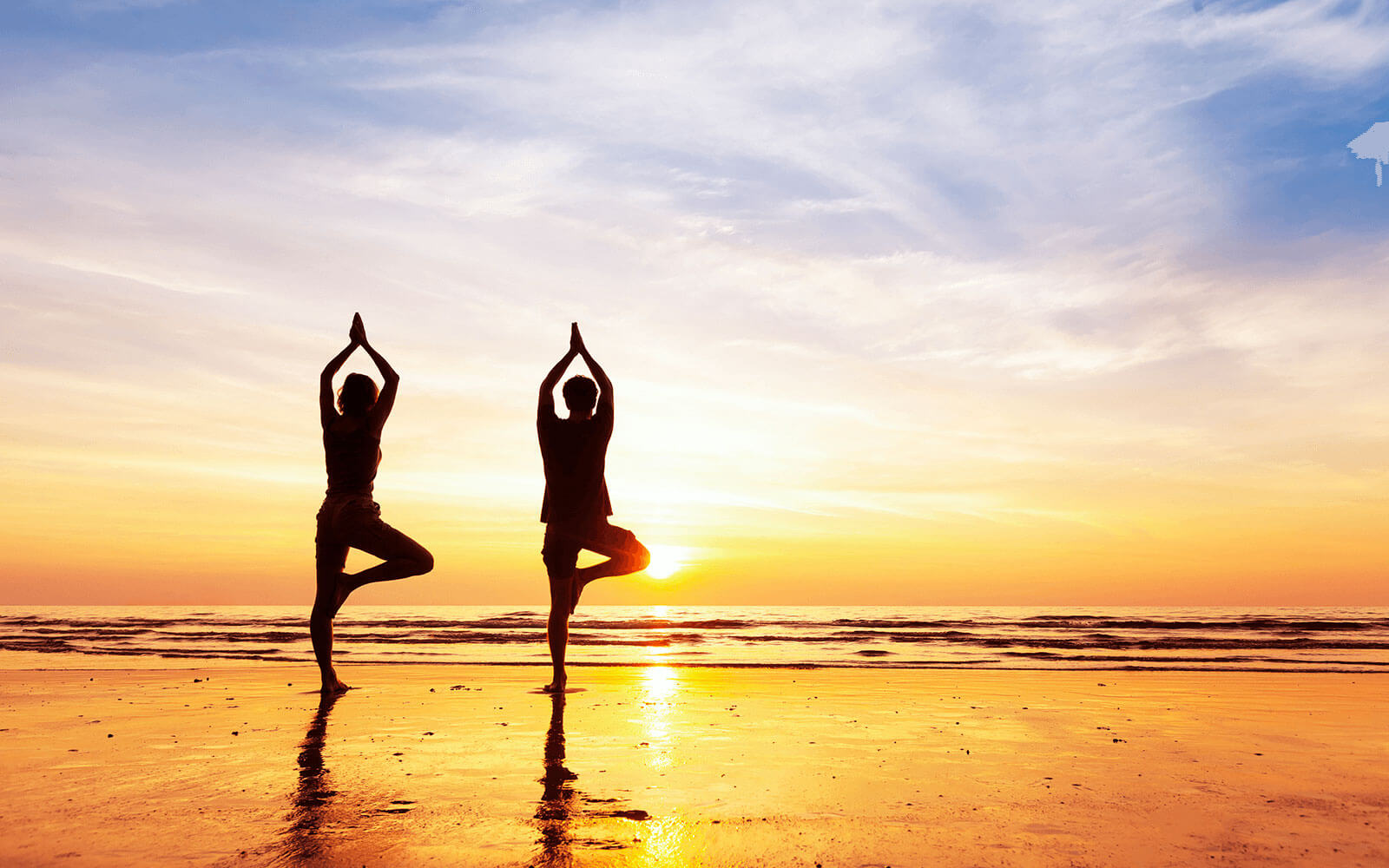In our fast-paced urban lifestyles, stress and anxiety have become common companions. The relentless pursuit of success and the overwhelming pace of modern life can leave us feeling depleted and disconnected from ourselves. However, amidst this chaos, traditional Indian wellness practices like yoga, meditation, and pranayama offer a holistic approach to rejuvenation and well-being. Rooted in ancient philosophy, these practices are not merely fitness trends; they are powerful tools for enhancing mental and physical health. Integrating them into daily life can provide a pathway to balance and harmony.
Understanding Traditional Indian Wellness Practices
Yoga
Yoga is a comprehensive system that encompasses physical postures (asanas), breath control (pranayama), meditation, and ethical principles. Originating over 5,000 years ago, yoga is designed to foster a connection between the body, mind, and spirit. It emphasizes not just physical fitness but also mental clarity and emotional stability.
Meditation
Meditation is a practice of focused attention that aims to cultivate mindfulness and awareness. It helps quiet the mind, reduce stress, and enhance overall mental health. Various forms of meditation, such as mindfulness, transcendental meditation, and loving-kindness meditation, provide unique benefits, allowing practitioners to explore different paths to inner peace.
Pranayama
Pranayama, or breath control, is an integral aspect of yoga that involves various breathing techniques. By regulating the breath, practitioners can influence their mental and emotional states. Pranayama techniques can invigorate or calm the mind, making them invaluable tools for managing stress and anxiety.
The Modern Urban Lifestyle: Challenges to Well-being
In contemporary urban settings, individuals often face a myriad of challenges to their well-being:
- Chronic Stress: The demands of work, family, and social obligations can lead to chronic stress, affecting both mental and physical health.
- Sedentary Lifestyle: With the rise of desk jobs and digital technology, physical inactivity has become prevalent, contributing to various health issues, including obesity, cardiovascular disease, and diabetes.
- Mental Health Issues: Anxiety, depression, and burnout are increasingly common, driven by the pressures of modern life.
- Disconnection: The fast-paced lifestyle can lead to a disconnection from nature and oneself, making it difficult to find balance and inner peace.
Integrating Traditional Practices into Daily Life
Incorporating traditional Indian wellness practices into modern urban living can mitigate these challenges and enhance overall well-being. Here are several ways to integrate yoga, meditation, and pranayama into your daily routine:
1. Start Your Day with Yoga
Morning Yoga Routine: Begin your day with a short yoga session. Even 15-20 minutes of gentle stretching and basic asanas can energize the body and mind. Here’s a simple morning routine to get you started:
- Cat-Cow Pose (Marjaryasana-Bitilasana): This pose helps to warm up the spine and relieve tension in the back.
- Downward-Facing Dog (Adho Mukha Svanasana): This asana stretches the entire body and promotes blood circulation.
- Warrior I (Virabhadrasana I): This pose builds strength and stability while grounding your energy for the day ahead.
2. Incorporate Mindfulness Meditation
Mindful Moments: Set aside a few minutes each day for mindfulness meditation. Find a quiet space, sit comfortably, and focus on your breath. Allow your thoughts to come and go without judgment. Start with just five minutes and gradually increase the duration as you become more comfortable.
- Mindful Breathing: While waiting for public transport or during a coffee break, take a moment to practice mindful breathing. Inhale deeply, hold for a moment, and exhale slowly. This simple technique can reduce anxiety and refocus your mind.
3. Practice Pranayama for Stress Relief
Breath Control: Integrate pranayama techniques into your routine to manage stress and enhance mental clarity. Here are a few simple practices to try:
- Nadi Shodhana (Alternate Nostril Breathing): This technique calms the mind and balances energy levels. Close one nostril with your thumb, inhale through the other, switch nostrils, and exhale through the opposite nostril.
- Ujjayi Breathing: Also known as “victorious breath,” this technique involves inhaling and exhaling through the nose while slightly constricting the throat. It creates a soothing sound that can help calm the mind during yoga practice or meditation.
4. Create a Dedicated Space
Wellness Corner: Designate a specific area in your home for yoga, meditation, and pranayama practice. Decorate this space with calming elements like plants, candles, or soft cushions. Having a dedicated space can serve as a constant reminder to prioritize your well-being.
5. Join a Community or Class
Group Classes: Consider joining a local yoga or meditation class to enhance your practice. Engaging with a community can provide motivation, support, and shared experiences. Many urban centers offer classes tailored to busy schedules, including early morning and evening sessions.
6. Digital Detox
Limit Screen Time: In a tech-driven world, it’s essential to take breaks from screens. Allocate time each day for a digital detox—whether through meditation, yoga, or simply going for a walk in nature. Disconnecting from technology can foster mindfulness and enhance your overall well-being.
7. Combine Practices
Holistic Approach: Feel free to mix and match yoga, meditation, and pranayama practices. For instance, start with a few minutes of pranayama to center yourself, followed by yoga asanas to energize your body, and conclude with a meditation session to cultivate inner peace.
Benefits of Integrating Traditional Practices
1. Improved Physical Health
Regular practice of yoga can enhance flexibility, strength, and posture. Moreover, incorporating pranayama techniques can improve lung capacity and overall respiratory health. This can lead to better physical health, reduced risk of chronic illnesses, and enhanced energy levels.
2. Enhanced Mental Clarity
Meditation fosters mindfulness and mental clarity. Studies have shown that consistent meditation practice can improve focus, cognitive function, and emotional regulation. This is particularly beneficial in today’s fast-paced work environments, where distractions are abundant.
3. Emotional Resilience
Integrating traditional practices can promote emotional well-being by enhancing self-awareness and emotional regulation. As practitioners learn to observe their thoughts and feelings without judgment, they develop greater resilience in facing life’s challenges.
4. Strengthened Mind-Body Connection
Yoga, meditation, and pranayama collectively cultivate a deeper connection between the mind and body. This heightened awareness can lead to improved self-care, a better understanding of one’s physical and emotional needs, and a more balanced lifestyle.
5. Stress Reduction
The combination of movement, breath control, and mindfulness significantly reduces stress and anxiety levels. Traditional practices provide effective tools for managing stress and fostering relaxation, making it easier to navigate daily challenges.
Incorporating traditional Indian wellness practices like yoga, meditation, and pranayama into our modern lives offers a powerful solution to the challenges of urban living. By embracing these practices, we can reduce stress, enhance mental and physical well-being, and cultivate a more harmonious existence.
As we navigate the demands of our fast-paced lives, it’s essential to remember that wellness is a journey, not a destination. Small, consistent steps toward integrating these practices can lead to profound changes over time. By prioritizing our health and well-being through the wisdom of traditional Indian practices, we can reclaim our vitality and find balance in a chaotic world. Whether you’re a seasoned practitioner or a curious beginner, the power of these ancient traditions awaits you, ready to enhance your life in meaningful ways. Embrace the opportunity to nourish your body and mind, and experience the transformative effects of yoga, meditation, and pranayama in your daily routine.




